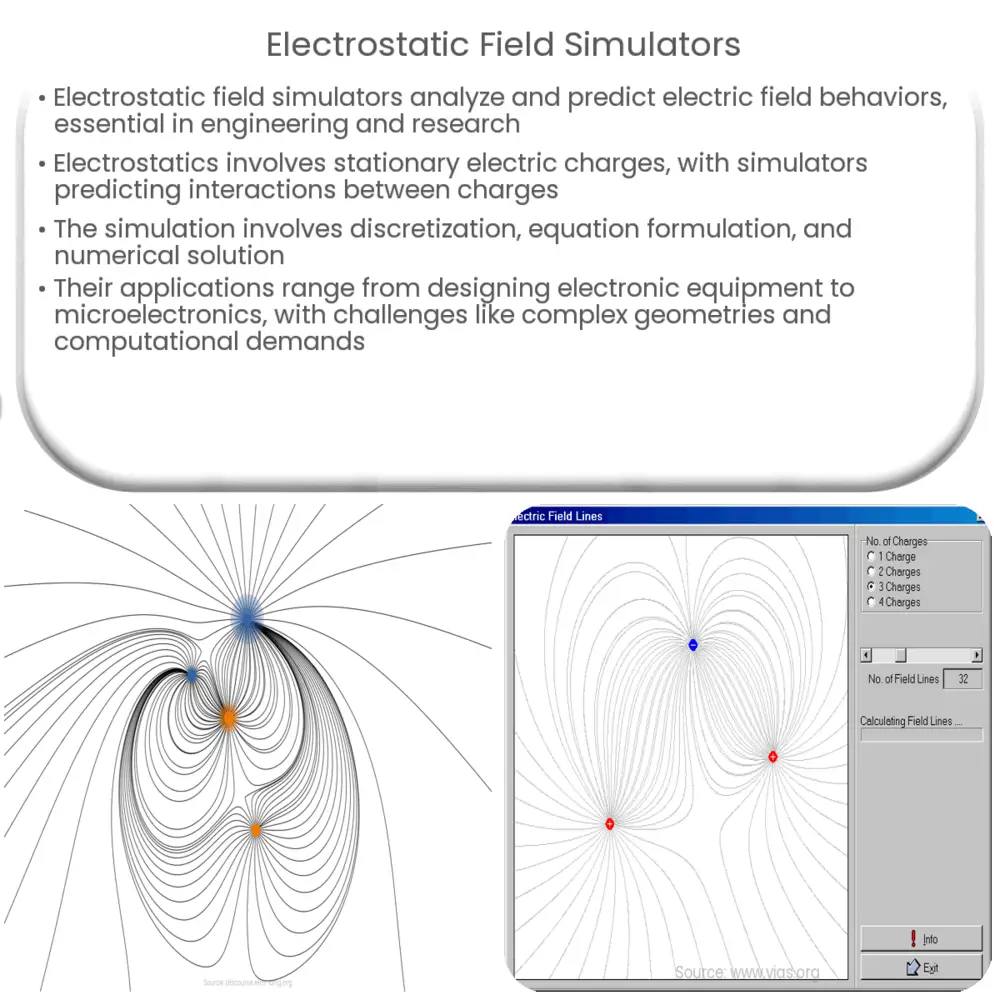Explore the fundamentals of electrostatic field simulators, their working principles, applications, and future prospects in this comprehensive article.

Introduction to Electrostatic Field Simulators
Electrostatic field simulators are powerful computational tools that assist in analyzing and predicting the behavior of electric fields in a variety of environments. Utilized extensively in scientific research and industrial applications, these tools are essential for various engineering fields, such as the design of integrated circuits, high voltage equipment, and electrostatic discharge protection mechanisms.
The Principle of Electrostatics
Understanding the principle of electrostatics is crucial to grasp the functionality of electrostatic field simulators. In simple terms, electrostatics deals with the phenomena and properties of stationary or slow-moving electric charges with no acceleration. When electrically charged objects are in a static or ‘at rest’ state, the surrounding electric field forms a particular pattern. The simulation of this pattern is precisely what electrostatic field simulators facilitate, enabling the prediction of interactions between charged bodies.
Working Mechanism of Electrostatic Field Simulators
At the heart of these simulators lie complex mathematical algorithms which include integral equations, differential equations, and various numerical methods. Some of the key steps involved in the simulation process are as follows:
These steps are iteratively performed until a satisfactory solution is achieved. However, it is important to remember that the accuracy of simulation results heavily depends on the quality and refinement of the discretization process and the effectiveness of the chosen numerical solution method.
Applications of Electrostatic Field Simulators
Electrostatic field simulators find their use in a plethora of applications ranging from the macro to the nano scale.
Further Applications and Benefits
Moreover, electrostatic field simulators also have significant applications in the field of electrostatic discharge (ESD) protection. ESD is a sudden and momentary electric current that flows between two objects at different electrical potentials. By using these simulators, engineers can design better ESD protection mechanisms for electronic devices, which are very susceptible to ESD damage.
In the domain of scientific research, electrostatic field simulators help in studying and predicting the behaviors of various physical phenomena such as the motion of charged particles, the formation of lightning, or the operation of a Van de Graaff generator. This facilitates better understanding and advancement in related scientific fields.
Latest Developments and Future Prospects
With the ever-evolving computational capabilities, the efficiency and accuracy of electrostatic field simulators are continually improving. Current research is focused on improving the numerical solution methods and the algorithms for faster and more accurate simulations. Also, with the advent of quantum computing, the future of electrostatic field simulators looks even more promising.
Challenges and Limitations
While the benefits and applications of electrostatic field simulators are undeniable, they are not without their challenges and limitations. Some of the challenges include the difficulty of accurately representing complex geometries and boundary conditions, numerical stability issues, and the considerable computational resources needed for large-scale simulations. However, continuous improvements in computational techniques and hardware technologies are helping to overcome these limitations.
Conclusion
In conclusion, electrostatic field simulators are integral tools in the landscape of electrical engineering and scientific research. These simulators, grounded in the principles of electrostatics, leverage complex mathematical equations to predict the behaviors of static electric fields. While the process has its challenges, advancements in technology continue to refine and improve the capabilities of these simulators. As we move into the future, the role of electrostatic field simulators will undoubtedly become even more significant, spanning an ever-widening range of applications from microelectronics to high voltage engineering and beyond.

